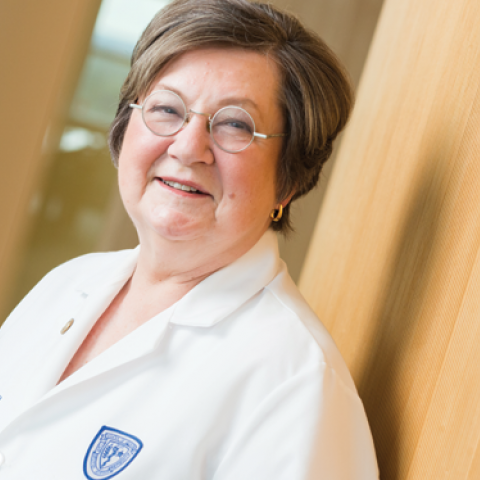The punishing siege of COVID-19 continues and will be worse before it gets better. We all have become reacquainted with the quirks of our homes. We have now determined just how robust our internet connection really is, and we have sworn that, as soon as the stores reopen, we will acquire a newer, faster computer.
We have launched our seniors into their final medical student phase with a livestream-cum-email Match Day; conducted dissertation defenses online; and taught our classes in ways we never thought that we would have to use so soon. In many ways, we fight the pandemic just by retaining whatever sense of normalcy we can muster in the education realm and sending our students well-prepared into the world.
We fight the pandemic by not allowing it to beat us. We have carried on our research to the best extent possible and defended precious and unique samples, animals, cells, and reagents. We have switched our patient appointments to telehealth visits wherever feasible, and screen our patients who must visit us for care so that, as best we can, we avoid cross-contamination. We fight by keeping our patients as healthy as we can.
We fight stress as best as we can. The virtual meeting of our Wellness and Prevention Pathway on Stress Reduction was well-attended, and we are seeking ways to make the content more widely available. Everyone needs to control their stress responses these days! Faculty counsel students as well – and their lab members. We are all in this together.
But many of us fight the pandemic more directly. We are proud that UH has been chosen as one of the sites for the clinical trial of remdesivir, and that a potential salvage method for patients who progress to ARDS is also being tested in the UH ICU. Our faculty, led by Grace McComsey, wasted no time in entering the clinical research arena. Clinical investigators at Metro and the Cleveland Clinic are pursuing IRB approval to test anti-IL-6 or anti-GMCSF to limit coronavirus-mediated inflammation, and CC will participate in the NIH trial of Hydroxychloroquine and Azithromycin. We are proud that investigators from our affiliates, as well as our basic science labs, have formed a Coronavirus Task Force led by immunologist Rafick-Pierre Sekaly and virologist Jonathan Karn. They will share ideas, reagents, cells, and expertise to attack the problem both from a diagnostic and therapeutic approach. Seven individual working groups comprise the larger task force and have been conversing for over a week.
Collaboration is essential. We hear that our colleagues in engineering will work on fabricating needed items for the clinicians, and, together with our own Brian Grimbeg, on developing a point of care test for this disease to help the epidemiologists. Chip Tilton may be able to develop a rapid detection test. Mahmoud Ghannoum is testing protection of the nasopharynx by antiviral spray. Our big data people are working to extract relevant information hidden in the reams of data now becoming publicly available. Gaining control of the pandemic by science is just what we do. In fact, our civilization depends on the biomedical establishment to get us out of this disaster.
But holding back the deluge on the front lines of the pandemic stands faculty member Heidi Gullett, MD, MPH, who is the Incident Commander for COVID-19 for the Cuyahoga County Board of Health. Heidi has been detailed to CCBH half time, and now is coordinating the COVID-19 public health response in our county, the hardest hit in Ohio. She created many of the public health protocols that have been expanded statewide, and have been so highly praised. She recruited help as quickly as possible, including our prevention medicine residents, our medical students and some of our faculty. And she has gotten our local institutions, her team and the state to work together very effectively so that, as the estimable Kurt Stange put it to me, “the whole is greater than the sum of the parts.”
We are very proud of those who stepped up to trace cases, provide education, calm fear but enforce protective measures, and just to help. Heidi sent me an email last week telling about the brilliant first day on the job, with our students tracking down contacts of cases, utilizing all resources if the standard methods proved inadequate, learning to conduct the structured interviews of cases and contacts, staffing the call center, and bringing “energy and a positive vibe” to the team. Yes indeed. The doctors of tomorrow are here for us today.
So, we may stand beleaguered, but we are not helpless in the face of this tiny invader. We are fighting back with all the resources we can muster in public health, our affiliated hospitals and clinics, our laboratories, but mostly with the wisdom accumulated in years of study and experience and with great energy. For some of us it is the energy of youth, and for others, the energy that comes from being needed on the front lines, wherever they are drawn for each of us – and the energy that comes to us in challenges to solve important problems.
Thanks to all of you who are fighting. We all are, each in our own way. We fight in the virtual classroom, the clinic, the hospital, the lab, and the sustaining of the enterprise. You are terrific. I’m so very proud of all we are doing.
Pam


